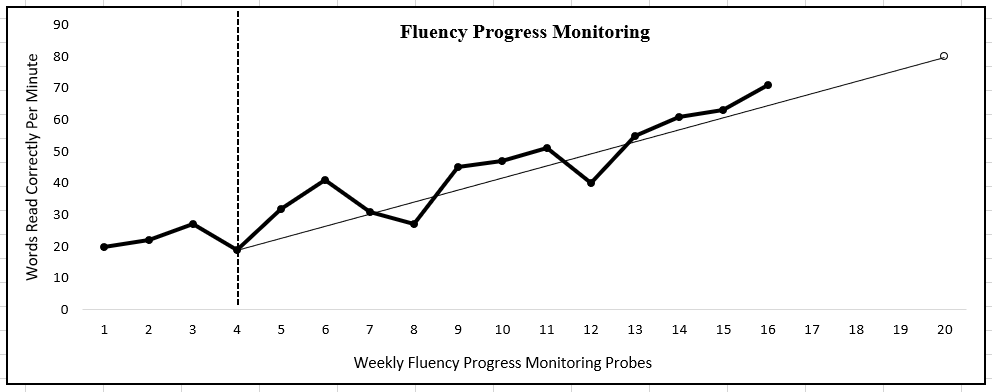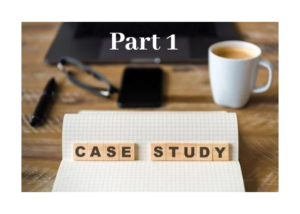What is Curriculum-Based Measurement?

Curriculum-based measurement (CBM) is an approach to measuring students academic growth along with evaluating the effectiveness of instruction in the classroom (Deno, 1985). Curriculum-based measurement is a simple set of standardized procedures that are a way to obtain reliable and valid measurement of a student’s achievement.
CBM measures look at examining general outcome measurement rather than a mastery goal. Mastery goals assume that when a student masters a succession of skills, that by the end of the year they will be able to apply these mastered skills as a whole. Mastery goals assess one skill at a time in isolation. CBM is a general outcome measure. CBM measures look at what skills a student is able to in towards the performance on the long tern goal of the skills and not just the skills a student is currently learning. Instead of assessing students skills one at a time, a general outcome measure takes multiple skills and assess their use together. For example, reading is not the isolation of decoding and phonics skills, but the ability to use thsoe skills together at the same time to read. A fluency CBM looks at how students apply these skill in a reading passage. General outcomes measures allow you to track a student’s performance over time rather than the mastery of one skill.
CBM is also used to evaluate the effectiveness of instruction in the classroom. Based on a student’s performance on CBM measures, you can track the effectiveness of how your teaching impacts student achievement. If a student is making standard growth in relation to their goal, you can make the assessment that the instruction in the classroom is positively impacting that student’s performance. If a student is not making growth or growth is variable, there may need to an instructional change to support student growth.
CMB measure have key characteristics that set them apart from teacher created classroom measures. Here are the key features of CBM measures.
|
Characteristics of CBM Measures |
||
|
Technically adequate |
CBM measure are reliable and valid procedures that are standardized for repeatedly sampling a student’s performance. |
CBM measures reliable for looking at student performance because they are standardized and the presentation and measures do not change. If you are giving a CBM in reading, then you will be using the same type of reading measure from week to week. There is no variation in what you present to students. |
|
Standard Measurement Tasks |
The tasks that are measured by CBM for different content areas. |
CBM measure can use word identification, fluency passages and comprehension MAZE to measure student performance. For math it could be calculation or application of math skills. |
|
Prescriptive Stimulus Materials |
Referring to the materials that are chosen for CBM measures. The measures should be based on their connection to a local districts state standards and their connection to the skills students need in reading, writing and math. |
When you select CBM materials, you need to consider how they connect to the state standards a student is being assessed on or their connection to skills addressed in IEP goals. Considering looking at validated CBM programs from the National Institute for Intensive Intervention. |
|
Administering and Scoring |
CBM measures have specified timing, duration of sampling, scoring and directions. |
CBM measures have a standard way to administer the measure, timing requirements and the lengths of how long the measure are to be giving during the school year. Standardizing how students are given CBM measures insures reliability and validity of the data. |
|
Performance Sampling |
Direct observation procedures are used in CBM. |
When you score a CBM measure, you are counting correct versus incorrect responses given a specific time period. For example, a fluency probe given in one minute would be scored on correct word read per minute. |
|
Multiple Equivalent Samples |
This is the distinctive feature of CBM in that measure are given consistently over time. |
CBM measures are given weekly and focus on a students performance on a range of probes that are accessing the same skill, but using materials the student has not used previously. For example, a math calculation probe will assess student with the same presentation of the materials but the content inside them is unfamiliar to students but aligns with the skill you are assessing. |
|
Time Efficient |
CBM is designed for efficiency. |
CBM measure are short with a minimum time ranging from one minute up to five minutes. They do not take a long time to do and can be done easily every week. |
|
Easy to Teach |
Other individuals can administer CBM probes without skewing data. |
Paraprofessional and other school staff can be trained on how to administer CBM probes. Since they have a standardized administration, as long as someone is trained on how to give it, the teacher doesn’t have to be the only one who can give CBM measures. |
Another distinction of CBM measures from other measures of student performance is that they are are criterion-referenced. Criterion-referenced refers to looking at what level a student has demonstrated their knowledge of a specific standard. For example, criterion-referenced for math may examine how a student demonstrates their knowledge of fractions. Students may only have demonstrated skills for identifying fraction, but do not demonstrate their knowledge of comparing fractions. This criterion-referenced measure would tell you that while the student understands what a fraction is, they do not know how to apply that knowledge to different context of fractions like comparing. Unlike norm-referenced measures, which compare a student’s performance to other students of the same age and grade, they are looking at a students individual knowledge in reference to the standard of learning.
One of the key factors of using CBM measures, is their graphical representations. When giving a student a weekly CBM probe, the only way to assess their growth and your instructional practice is to graph the data. This can be done wither by hand or using a computer program. Seeing the data graphed and an aim line of the student goal included will help you to determine what is happening over time with the students growth and you instructional impact on student outcomes.

This graph demonstrates what a CBM graph would look like. The graph shows that this student is on track to reach their goal of 80 correct words per minute. A teacher can use the graphed information from CBM measure to assess a student’s progress and the impact of instruction on student outcomes. If this students for example has CBM scores below the aim line, the teacher should consider an instructional change that would impact student learning.
We are going to explore the CBM process through a case study. The case study examines determining what CBM probes to use for students, making decision rules that impact if an instructional change is needed and how CBM process impacted students outcomes.

References:
Deno, S.L. (2003). Developments in curriculum-based measurement. Remedial and Special Education, 37(3), 184–192.
Deno, S. L., & Fuchs, L. S. (1987). Developing curriculum-based measurement systems for data-based special education problem solving. Focus on Exceptional Children, 19(8), 1–16.
Fuchs, L.S., & Deno, S.L. (1992). Effects of curriculum within curriculum-based measurement. Exceptional Children, 58, 232–243.
Fuchs, L.S., Deno, S.L., & Mirkin, P.K. (1984). The effects of frequent curriculum-based measurement and evaluation on pedagogy, student achievement, and student awareness of learning. American Educational Research Journal, 21, 449– 460.
Hosp, M. K., Hosp, J. L., & Howell, K. W. (2007). The Guilford practical intervention in the schools series. The ABCs of CBM: A practical guide to curriculum-based measurement. New York, NY: Guilford Press.
Hosp, J. L., Hosp, M. K., & Howell, K. W. (2014). The ABCs of curriculum-based evaluation: A practical guide to effective decision making. New York, NY: Guilford Press.
Marston, D. B., Mirkin, P. K., & Deno, S. L. (1984). Curriculum-based measurement: An alternative to traditional screening, referral, and identification. The Journal of Special Education, 18, 109–117.
Shinn, M. R. (Ed.). (1989). Curriculum-based measurement: Assessing special children. New York: Guilford Press.
Stecker, P. M., Fuchs, L. S., & Fuchs, D. (2005). Using curriculum-based measurement to improve student achievement: Review of research. Psychology in the Schools, 42, 795–819.
Wayman, M.M., Wallace, T., Wiley, H.I., Tichdt, R., & Espin, C.A. (2007). Literature synthesis on curriculum-based measurement in reading. The Journal of Special Education, 41(2), 85–120.
